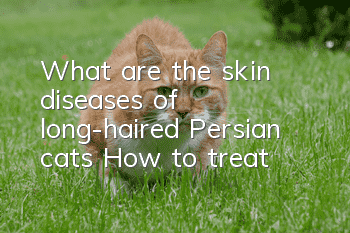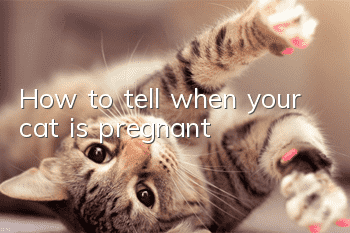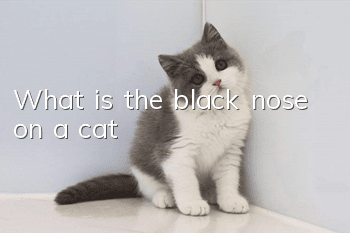What are the skin diseases of long-haired Persian cats? How to treat?

Long-haired cats are most susceptible to skin diseases, especially long-haired Persian cats. So what are the skin diseases of long-haired Persian cats? How to treat skin mycosis in long-haired Persian cats? How to prevent skin mycosis in Persian cats? It doesn’t matter. Today, I will learn about Persian cat skin diseases with the editor. I hope you can Help you.
What are the skin diseases of long-haired Persian cats?
1. Flea allergy dermatitis: As the name suggests, after a flea bites, small red papules appear in the wound. The wound appears after the cat scratches it due to itching. Sometimes the wound will be combined with mold and bacterial infection, causing the lesion area to expand and heal. big.
2. Scabies: This is a type of scabies that first parasitizes in the ears, then attacks the head, and then the whole body. When this insect eats animal dander tissue, it will cause severe itching, so when you find a baby If the cat keeps scratching its ears and shaking its head, you should pay attention. It may even have scabs, ulcers, pustules... Please stop "observing" and send it to the hospital for treatment!
3. Ringworm: Cats under one year old are easily infected with ringworm, which is a special kind of mold. The typical symptom is that the hair loss area appears irregularly round, mixed with scaly spots and scars, and sometimes allergic papules. , this kind of ringworm is highly contagious and common to humans and animals. Once discovered, it must be treated and controlled as soon as possible.
Treatment methods for Persian cat skin diseases:
If the cat has a skin disease, its related utensils should be thoroughly disinfected, and the surface should be scrubbed or sprayed with 0.5% bleach. If the cat is exposed to sunlight for 5 to 6 hours a day for one week, the effect will be better. , it is best to expose it to the sun until the cat recovers from treatment. Since mold will survive in the form of spores, after the cat treatment is effective, it will continue for about one week to ten days. The same goes for disinfection of utensils, so as to avoid the chance of recurrence. Otherwise, the remaining mold spores can still survive and lurk for up to 3 days. ,4 years.
How to treat skin mycosis in long-haired Persian cats?
Persian cats suffering from dermatomycosis need to have their hair shoveled all over their bodies once a month. This kind of hair shoveling is best left to a professional veterinarian. Veterinarians usually give a mold-specific hair cleaner to clean the Persian cat's body, and then take a medicated bath after cleaning, usually twice a week, and then apply anti-fungal ointment to the Persian cat every day, an average of twice a day. In this way, the Persian cat's skin mycosis will slowly recover.
However, improper treatment of Persian cat skin mold, incorrect medication, incomplete shaving of the Persian cat's hair, substandard living environment cleanliness, etc. All incorrect treatments and environmental influences can lead to Persian cat skin mold. Disease relapses. At the same time, there are other diseases lurking in Persian cats. For example: hyperadrenocortical disease, diabetes, feline leukemia infection, feline AIDS and cancer, etc., may cause Persian cat skin mold.The disease recurred again.
Persian cats suffering from dermatomycosis must receive timely and effective treatment. At the same time, we must strengthen the management of environmental and residential hygiene. In daily life, we should also prevent the occurrence of Persian cat skin mycosis. Strengthen the cleaning and management of living environment hygiene. Tools and toys used by Persian cats should also be cleaned and disinfected regularly. Persian cats should also be bathed regularly to clean their bodies to prevent Persian cats from being harmed by skin mycosis.
How to prevent the recurrence of skin mycosis in Persian cats?
Regularly carry out mold culture for Persian cats. The residence and all Persian cat utensils should be carefully cleaned and detoxified. Disinfection of the living environment is the most difficult and not easy to carry out thoroughly, but for the sake of Persian cats, it still has to be done. Although owners do not need to rush to the veterinarian just because their Persian cats sneeze, if their cats have abnormal symptoms, especially when they suddenly lose a lot of hair, if they can detect and treat them early, they can reduce unnecessary pain and suffering. Spend, and ensure the good health of your Persian cat.
Since this is a skin disease that is easy to relapse, after Persian cats recover, they must also strengthen the management of their living environment, pay attention to the quality of food hygiene, and avoid contact with affected cats from outside. Owners who have come into contact with other affected cats must also remember Wash hands and disinfect.
After reading this article, you must have a certain understanding of skin diseases and skin mycosis in long-haired Persian cats. I hope the above content can help you.
- Ways to correct your cat’s unusually naughty behavior, cat training!
- What should I do if my cat doesn’t gain weight? Is there any good way to make my cat gain weight?
- Why does a cat suddenly drink a lot of water? It may be due to these reasons!
- What should you pay attention to when a Fold-eared cat is pregnant?
- Why does a cat's poop become unformed?
- Brown discharge from cat's eyes
- What causes cat hair to become clumped?
- Why does a cat have a lot of eye discharge?
- How can cat moss be cured?
- How much cat food should a cat eat in a day? What cat lovers must know!



